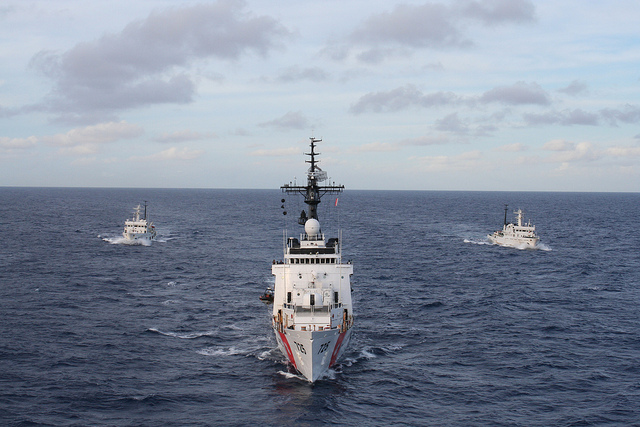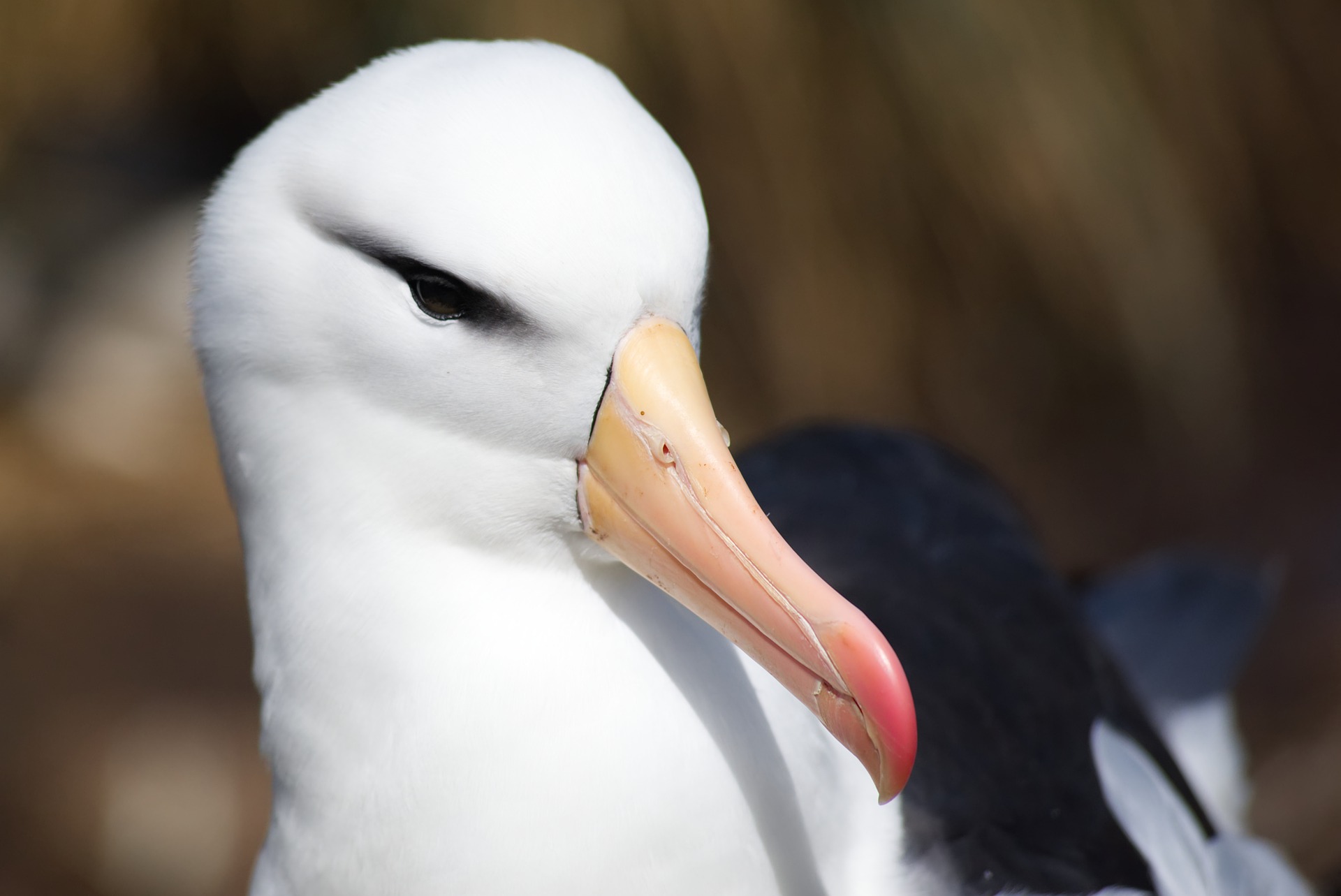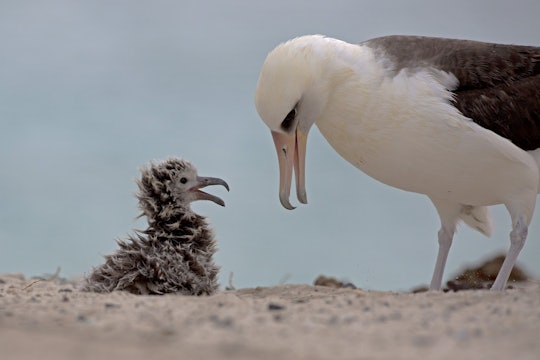Albatrosses can spy on illegal fishing in international waters
But could satellite-tagging further endanger these seabirds?
Fishing poses a major threat to seabirds — one of the most threatened groups of animals on our planet. Discarded fish and baited hooks attract foraging birds to fishing vessels, where they easily get trapped on hooks or entangled in fishing line. More than 300,000 seabirds become "bycatch" each year. Endangered and threatened species of albatrosses make up a large chunk of these deaths.
To curb albatross fishing-related deaths, there are bycatch reduction strategies, such as setting baited hooks at night when seabirds are not actively hunting, adding weight to hooks so they sink below the surface and away from foraging birds, and attaching bird-scaring streamers to fishing lines. But when oceans occupy such a vast area of our planet, and the majority of fishing areas lie in international waters, it is impossible to reliably monitor what fishers are doing on the high seas.
A lack of consistent monitoring and enforcement enables illegal, unreported, and unregulated fishing practices, which remove an estimated $23 billion of seafood from the oceans annually and threaten vulnerable marine ecosystems and species. There is no way to ensure fishers adhere to fishing regulations or the implementation of bycatch reduction strategies. Lindsay Young, Executive Director of Pacific Rim Conservation says, “Laws without enforcement are basically just suggestions.”

US Coast Guard vessel and two Chinese coast guard vessels. The ships monitoring the East Pacific for illegal fishing activity.
A research team, led by scientists from France's Centre d'Etudes Biologiques de Chizé, decided to turn albatrosses themselves into maritime law enforcement. Since it can be so difficult to monitor fishers directly, some turn to tracking the movements of seabirds that are particularly susceptible to becoming bycatch. Scientists suspected that birds like albatrosses come in contact with fishing vessels more frequently than non-fishing vessels, explaining their increased risk of being caught in fishing gear. If this was indeed the case, the team believed they could pick up important information about fishing vessels just by tracking the movement patterns of birds.
But first, the scientists had to develop a tracking device that would allow them to monitor both the location of the bird and any vessels it might come across. By outfitting albatrosses with satellite tags, they could see the position of each tagged bird in near real time. But normal satellite tags only report the position of the individual wearing the tag; they cannot tell if a fishing vessel is nearby.
Fishing boats and other vessels typically report their locations through Automatic Identification Systems, or AIS. But in international waters where there is little regulation or enforcement of these systems, vessels can turn off their AIS units to avoid detection. However, even if a boat has turned off its AIS, it is almost always using some kind of radar for navigation. The researchers used this to their advantage and incorporated a radar detector into their satellite tags, which allowed them to see where both birds and boats were in real time.
Scientists outfitted 169 Wandering and Amsterdam albatrosses with the radar-detecting satellite tags and monitored their flight paths around the Southern Ocean for 6 months. They published their proof-of-concept study in Proceedings of the National Academy of Sciences.

Albatross
The wandering albatrosses flew over large swaths of the Southern Ocean and were highly attracted to fishing vessels, detecting them from over 30 kilometers away. Of the hundreds of vessels the birds located, most had already been reported and were known to be fishing in the area. But, scientists found that nearly 30 percent of radar signals within French Economic Exclusion Zones and around 37 percent of the signals in international waters detected by the albatrosses did not correspond to any AIS signals.
It is possible that unreported vessels are intentionally masking their position to cover up illegal fishing activities. Most vessels will continue to report their position in international waters to avoid collisions with other vessels. But vessels might turn off their AIS if, for instance, they are fishing illegally. While the bird-borne tags cannot explicitly determine if vessels are fishing illegally, they were able to locate vessels where other positioning systems, like AIS, failed.
The scientists hope that albatrosses could help wide-spread monitoring of areas that are otherwise difficult to regulate. If the birds could broadcast the position of unreported fishing vessels to authorities, it could drastically improve monitoring and enforcement capabilities in these areas.
Young says this technique could be useful "in tight coordination with law enforcement,” but she worries that it could also put the birds in danger. After all, how will fishers respond to the knowledge that birds are reporting their position to authorities?
Right now, albatrosses do not face overwhelming threats from hunting. By associating albatrosses with law enforcement agencies, officials could be placing a target on the back of an already threatened group of birds. The 100,000 seabird individuals killed each year by fishing dramatically impacts the already declining populations. And these large birds have a long generation time (they can live up to 50 years and can take anywhere from 6-20 years to reach sexual maturity) and low reproduction rates (a breeding adult will only lay one egg every 1-2 years!).
In an alarmingly similar situation, 530 endangered vultures were poisoned by poachers who were worried the mass of birds circling their illegally killed elephant carcass would alert authorities to their presence.
Placing tracking devices and other types of loggers, like these radar-detecting tags, on animals provides scientists with novel ways to collect large amounts of data in areas that are traditionally difficult to study, providing an invaluable resource for scientists. This research proves that albatrosses could very well help to manage high-seas fishing activities, and thereby could protect entire ecosystems. But we should also be considering the costs of using these birds as our personal tracking systems. Will an array of tracker-wearing albatrosses combat illegal fishing in the high seas or will it just further imperil these ocean sentinels?




I’m glad you discussed the question of whether we should use animal tracking data in this law enforcement manner. As scientists, it is really exciting to realize that we can use animal tracking data to track illegal activities, but whether we should needs to be considered more. Did the researchers you talk to propose any alternative methods for detecting the illegal fishing? Could miniature video cameras provide information on the boat/country of the boat so that law enforcement could be done back at port (perhaps removing the link to the birds)?